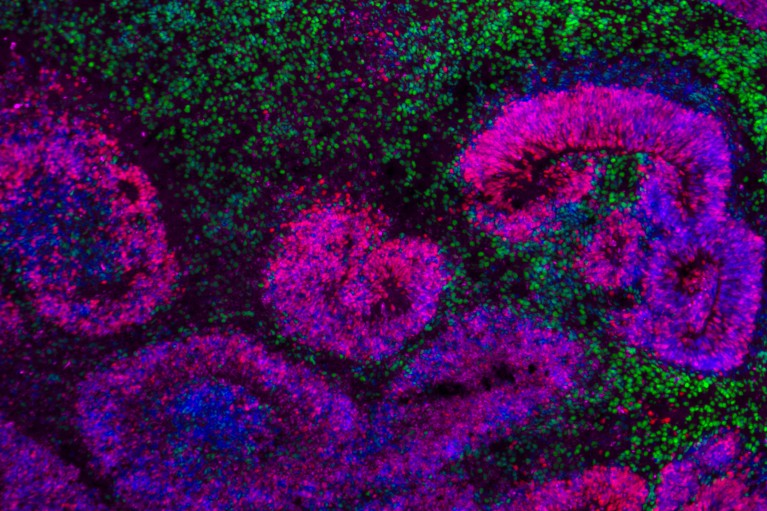First ever atlas of brain development shows how stem cells turn into neurons
Summary
A set of five papers published in Nature (5 November 2025) presents the most detailed atlases to date of how mammalian cortical cells arise from stem cells during embryonic development and early life. Researchers tracked hundreds of thousands of individual cells in mouse and human cortexes, charting molecular events, lineage relationships and timing for when progenitor cells make excitatory neurons, inhibitory neurons and supporting glial cells. The work is part of the BRAIN Initiative Cell Atlas Network (BICAN) and provides a high-resolution reference for developmental neuroscience.
Key Points
- The mouse visual-cortex atlas covers 568,654 single cells, identifying 148 cell clusters and 714 subtypes across prenatal and postnatal stages.
- In mice, many neurons keep acquiring specialised identities after birth, especially between postnatal day 11 (eye opening) and day 21.
- Human fetal-lineage tracing used unique DNA barcodes in 6,402 progenitor cells to map which stem cells produce which cell types.
- Human progenitors predominantly generated excitatory neurons before ~20 weeks of gestation, then shifted to producing inhibitory neurons after ~20 weeks.
- Generation of astrocytes and oligodendrocytes in humans appears more continuous and prolonged compared with mice.
- The atlases are intended as searchable reference maps that can be mined for genes and timepoints relevant to neurodevelopmental disorders like autism and schizophrenia.
Content summary
The collection includes two major mouse studies and human embryonic analyses. Hongkui Zeng’s team produced a comprehensive developmental atlas of the mouse visual cortex from embryonic day 11.5 to 56 days postnatal, revealing ongoing postnatal neuronal specialisation. Tomasz Nowakowski and colleagues used DNA barcoding in human fetal tissue to reconstruct lineage trees, demonstrating a clear temporal switch in progenitor output from excitatory to inhibitory neurons around the 20-week mark. Across the papers, investigators capture precise molecular signatures and developmental programmes that underpin cell-type emergence in the cortex.
Context and relevance
This work provides foundational reference data for developmental neuroscience. By giving researchers high-resolution timelines and lineage information, the atlases make it far easier to pinpoint when and where genes act during cortical development. That has direct relevance for studying the roots of neurodevelopmental disorders and for improving in vitro brain models. The datasets are part of the broader, well-funded BICAN effort to create standardised brain reference maps.
Why should I read this
Because if you care about how brains are built — whether you’re a researcher, clinician or curious reader — this saves you the legwork. The papers hand you maps and timelines showing exactly when stem cells switch tracks and make different neuron types, plus lineage tricks (DNA barcodes) that actually trace cell families. In short: this is the roadmap people will use to link genes, timing and cell types in brain development.

